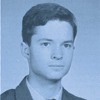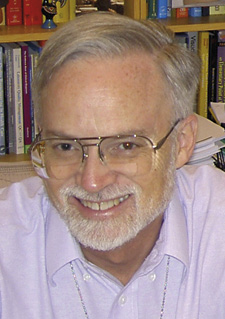A. Paul Durham – 50th Reunion Essay
A. Paul Durham
 4619 Maytime Ln
4619 Maytime Ln
Culver City, CA 90230
APaulDurham@gmail.com
310-837-6638
Spouse(s): Malvina (“Mila”—as in: do re MI fa so LA) Shakhnis (1978)
Education: Postgraduate studies in philosophy: 4 years at University of California Los Angeles, then 2 years at University of Leicester.
Career: 32 years at Diagnostic Products Corporation and Siemens Healthcare Diagnostics (Los Angeles). After 2010: consultant (aka one of the underemployed) and regular contributor to Clinical and Laboratory Standards Institute guidelines.
Avocations: Philosophy of mathematics from Plato to Jan von Plato, via Wittgenstein; photography, chess, film classics, figure skating, classical music; far too many books; Krugman, Trudeau, NYRB; dogs, cats, and other pettables; Uncle Apple’s niblings.
College: Jonathan Edwards
After Yale, I pursued graduate studies in logic and related subjects (foundations of measurement, natural language syntax, etc.) for years, first at UCLA, under Alonzo Church and others, then at U Leicester, at Prof. R. L. Goodstein’s invitation, where I struggled vainly with a dissertation relating his constructive formalism to Wittgenstein’s ruminations on the nature of mathematical proof, induction, existence and generality.
Mindful that philosophy done badly is never worth the doing, and finally conceding that far greater fluency in mathematics than I could achieve was required to do my chosen topic justice, in 1978 I transitioned from failed philosopher to faux statistician, joining a young company dedicated to a relatively new technology dramatically expanding the repertoire of hormones, tumor markers and other medically important analytes which can be measured routinely. DPC grew rapidly, emerging as the most prominent independent manufacturer of automated immunoassay systems… prior to its acquisition in 2006.
Until Siemens prematurely shut down DPC’s L.A.-based R&D operations in 2010, I found great satisfaction in serving the company as director of scientific publications and later as senior biostatistician. My principal roles involved technical writing, data analysis, programming and occasional presentations (in the US, South America and Europe) on topics in laboratory medicine and elementary statistics, primarily concerned with the clinical applications and performance characterization of immunoassays.
Acquiring the necessary knowledge and skills largely on my own initiative as I sensed the need, my professional work for DPC/Siemens played out as a 32-year extension of academic life. Gaining fluency in SPlus/R enabled me to explore efficient, often novel ways to visualize data and encapsulate statistical analyses. I developed a fascination with precision profiles, age-related reference values, nonlinear curve fitting, robust statistics, and other techy subjects which, sad to say, remain little appreciated in the clinical chemistry community despite our (DPC’s) efforts to convey their usefulness.
A principal source of gratification, always present, was working with so many wonderful colleagues, several of whom I count among my dearest friends. Moreover, unforeseen, personally rewarding opportunities would sometimes arise, as when my staff and I provided sustained editorial support for DPC’s founder as he labored to find expression for his Holocaust memories and insights (Sigi Ziering, The Judgment of Herbert Bierhoff, 1999).
Since 2005, I have devoted considerable time to CLSI, helping compose or revise several guidelines (addressed to IVD manufacturers, laboratories, and the FDA) on the performance evaluation of quantitative assays. I am especially proud of my contributions to EP05A3 and EP15A3, which I elaborated on in a presentation on precision profiles at the AACC National in 2013.
Meanwhile, philosophy remains a part of my life, and a large part of my library. I sometimes catch myself thinking back to donkey sentences (how to parse “The only frog ever to sleep with a princess married her”) and other classic puzzles, or reflecting on philosophical issues associated with my day job, notably how to characterize statistics (in the context of real-world data analysis) as it’s clearly neither science nor mathematics.

If the above is blank, no 50th reunion essay was submitted.
